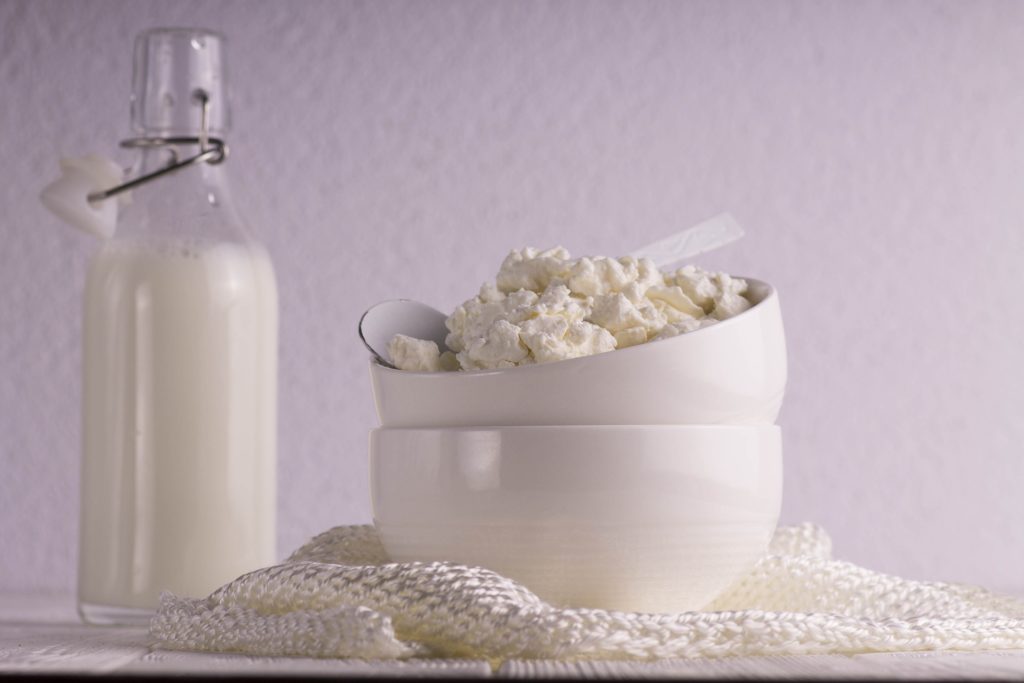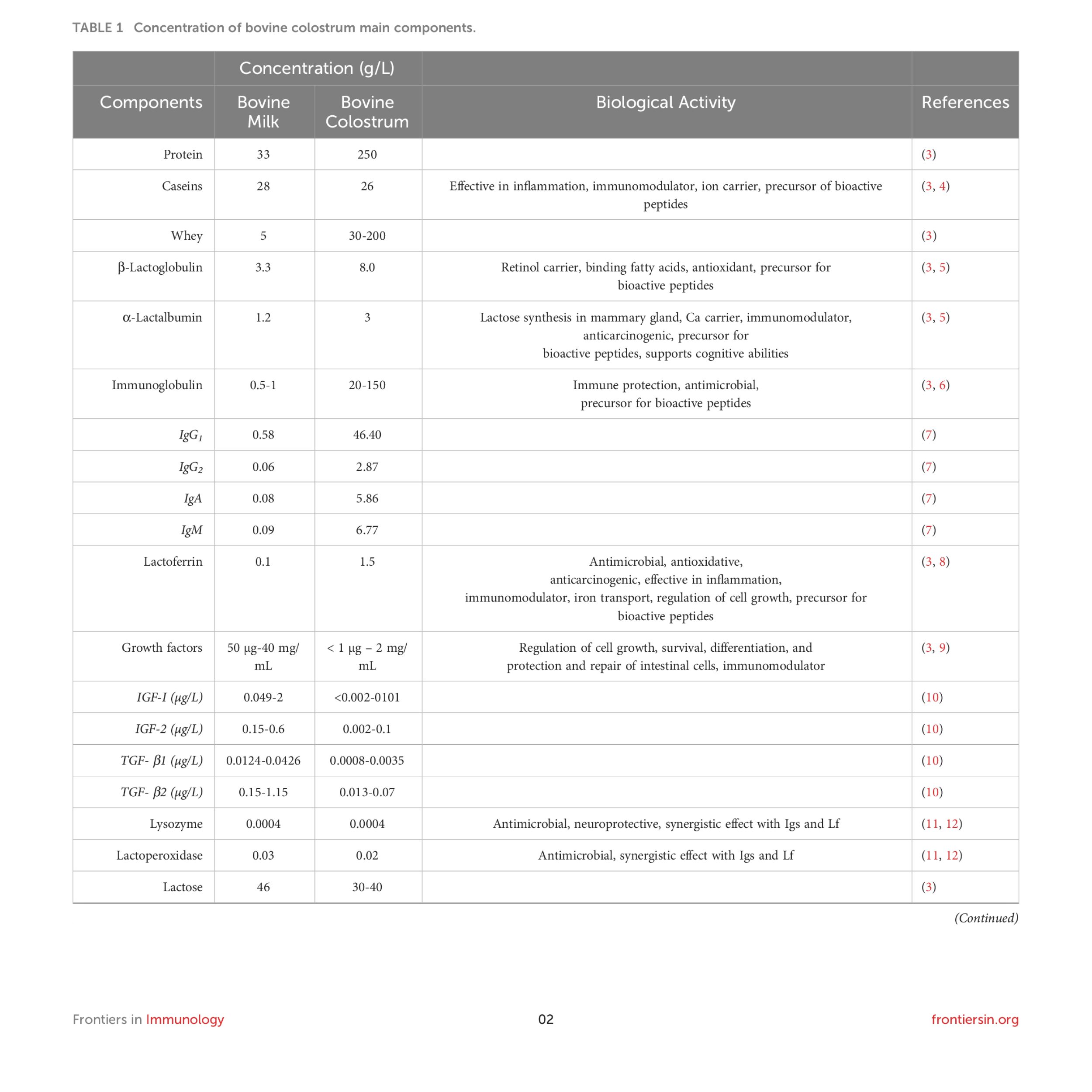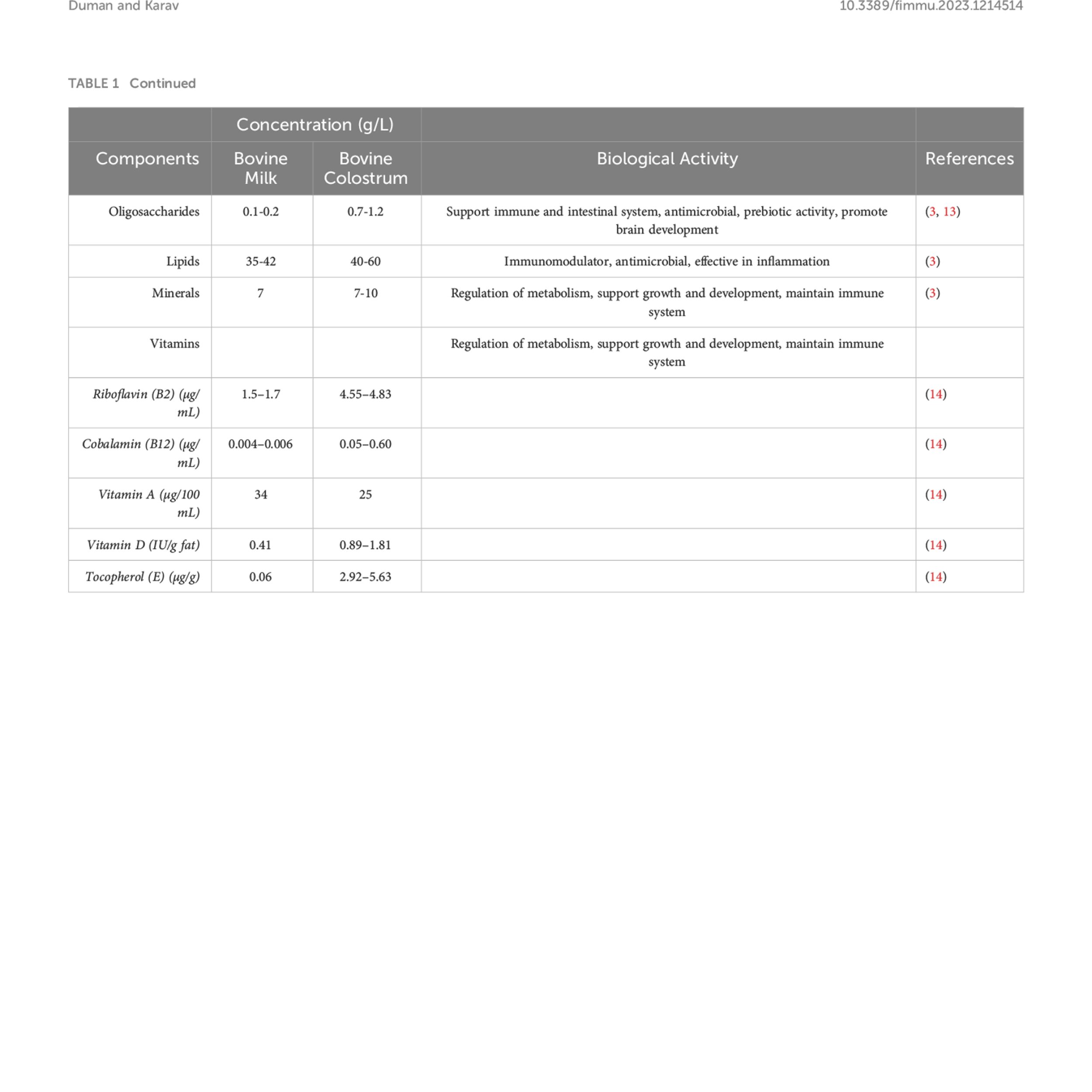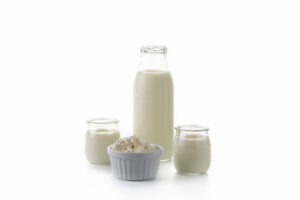
colostrum for winter
Bovine colostrum and its potential contributions for treatment and prevention of COVID-19
Igs, as the foremost protein part of BC, acting essential roles in transferring and supporting passive immunity in the newborn calves. The biological and immunological effect of BC Igs on human health has been extensively researched and is still being studied. Igs are classified as IgG, IgA, IgE, IgD, and IgM. The most abundant antibody present in BC is IgG and the IgG1 and IgG2 are the two subclasses of IgG which account for 80-85% of the total immunoglobulin content of BC. In comparison to mature milk, the Igs, the main group of immunological components found in BC, are approximately 100-fold greater. The higher concentrations of IgG present in BC demonstrate a variety of immuno-protective and immuno-modulatory features.
In the 1970s, Ellens et al. made the initial discovery that normal cow’s milk contains bovine IgG1 antibodies against rotavirus.
Thus, it was suggested that the application of HBC shows great potential for the prevention of COVID-19.
Bovine colostrum and its potential contributions for treatment and prevention of COVID-19
Bovine colostrum (BC) is the initial milk an animal produces after giving birth, particularly in the first few days. Numerous bioactive substances found in BC, including proteins, enzymes, growth factors, immunoglobulins, etc., are beneficial to human health. BC has a significant role to play as part of a healthy diet, with well-documented health and nutritional advantages for people. Therefore, the use of BC and its crucial derivatives in the development of functional food and pharmaceuticals for the prevention of several diseases such as gastrointestinal and respiratory system disorders is becoming increasingly popular around the world.
biology
biology: the study of living organisms
exist: have objective reality or being. to live.
virus: viruses are classified as non living sub microscopic intoxicants
Living things have cells. Viruses do not have cells. Living things reproduce. Living things use energy. Living things respond to their environment. In viruses, none of these are active processes, they simply occur based on the virus’s chemical make-up and the environment in which it ends up. Living things have potential. Viruses have no potential.
2024
There are no definitive conclusions as to whether a virus is a living organism.
‘Infected cells’ contain the same proteins as non infected cells. PCR measurement is a reflective quantitative of oxidative stress.
There is zero risk with a healthy microbiome.
Did you know that all infections begin with immune deficiency?
For ANY infectious or parasitic disease to start, it is ALWAYS a requisite that the host suffer IMMUNODEFICIENCY. At the same time, infectious and parasitic diseases themselves cause additional IMMUNE SUPPRESSION and more MALNUTRITION. This immune suppression is SECONDARY to the accumulation of free radicals, especially oxidizing species, that occurs during and after infectious and parasitic diseases.
Clinical Aspects of Immunology and Biochem J.
.
brown sugar icebox cookies
A prize winning simple cookie recipe with low sugar content of only 11 grams per two cookies.
more winter tips:
- cod liver oil
- beet root powder
- sodium ascorbate, zinc, GSE
A surprising new meta analysis of bovine colostrum is a great resource to learn about some of the published research on bovine colostrum.
Bovine colostrum is rich in various components that can contribute to immune system support. Some of the key immune-enhancing substances found in bovine colostrum include:
- Antibodies (Immunoglobulins): Colostrum is particularly high in immunoglobulins, such as IgG, IgA, and IgM. These antibodies play a crucial role in the immune response, helping to recognize and neutralize pathogens like bacteria and viruses.
- Cytokines: Colostrum contains cytokines, which are signaling proteins that regulate immune responses. They can modulate inflammation and help coordinate various immune system activities.
- Growth Factors: Bovine colostrum also provides growth factors that support the development and maintenance of various immune cells, contributing to overall immune function.
- Lactoferrin: This protein has antimicrobial properties and is found in colostrum. It helps inhibit the growth of bacteria and viruses.
Remember, no more than 6 teaspoons (25 grams) of added sugar per day for women and 9 teaspoons (38 grams) for men. The AHA limits for children vary depending on their age and caloric needs, but range between 3-6 teaspoons (12 – 25 grams) per day. Children under two should have zero grams of sugar per day.
If you like natural health tips like the ones above you can learn more in Immune For Life


